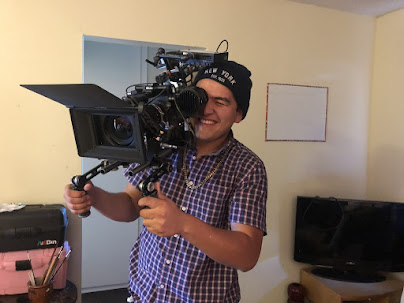Camerawork GCSE Work ツ
Pan: horizontal turn left or right
Used to follow movement. A whip pan (very fast pan) can create a feeling of action or drama.
Track/Dolly: Camera moves on tracks/wheels
Tracks action smoothly – look for in chases or fast-moving sequences.
Handheld: camera held by hand, often shaky
Handheld camera can add urgency, realism, pace or unease to a scene.
Zoom: focal length of lens changed to make subject appear closer or further away
A zoom into a character’s face can show realisation or an emotional reaction.
Crane: Camera attached to crane – can pan, track or ‘swoop’ in or out as required
Crane shots are often high angle and show large, epic scenes of dramatic action.
Tilt: Camera tilts up or down from fixed point
The hero or villain can be made to look weak or powerful using a tilt (high/low angle).
Editing: notes
Video: cuts and transitions
Film transitions
Cut (Straight cut, jump cut, match cut): Shot changes from one to another – the most common cut.
Dissolve: Shot melts into another – often shows passing of time.
Fade: Shot fades away and another shot appears. Fades to black often signify endings (of the day, scene or film)
The speed at which the film cuts from one shot to the next makes a huge difference to the experience for the audience. Generally, slow cuts build tension while fast cuts suggest action and excitement.
https://www.youtube.com/watch?v=_K69neKGZlM
There is a lot of pan being used to show how fast Sonic moves. There is a lot cuts and transitions to add the suspense and thrill to the trailer which will make the viewer go and see the real movie. There is a lot of zoom on people's faces to show their expression/ emotion.

Comments
Post a Comment